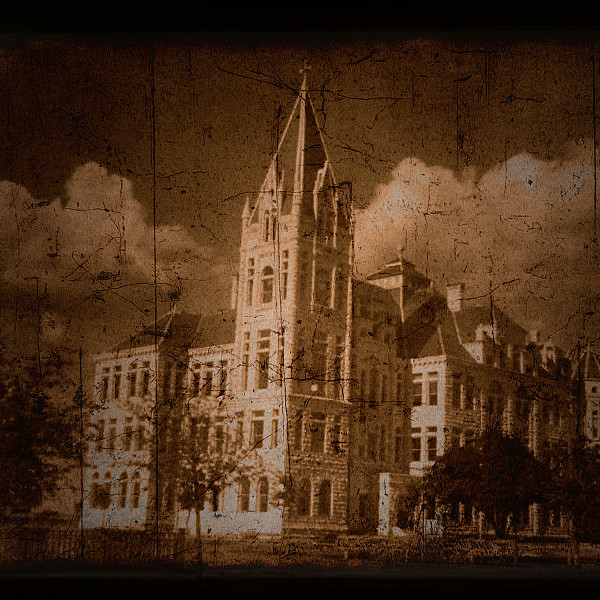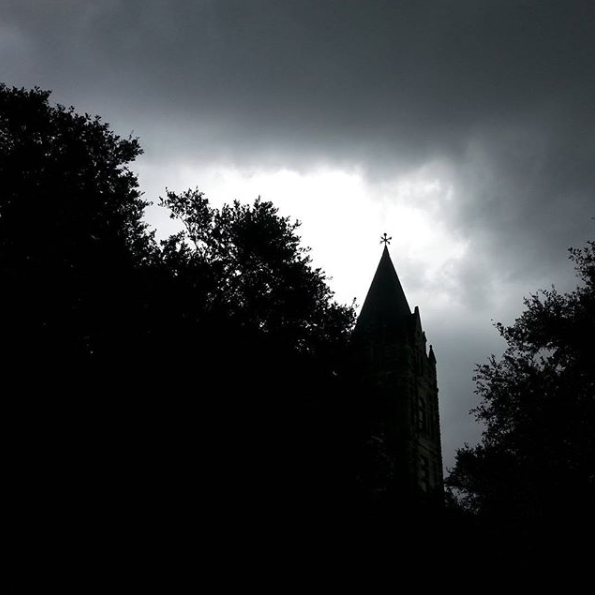News
Tenacious Traditions
April 01, 2021
April 01, 2021
Open gallery

Campus traditions are an important element of a college or university’s history and identity. They help bond students, faculty, and staff together, forging community through shared experience and school pride. And whether they include fun, frenetic events to commemorate a graduating class or profoundly moving services to celebrate a holiday, campus traditions reflect a school’s values and culture.
Established in 1840 as the first institution of higher learning in Texas, Southwestern University is no stranger to traditions. Many have come and gone in our long history, of course. But below are just a few little-known past and present customs that reveal the school’s quirky side.
Pin the Patch on the Pirate
Several universities claim that theirs is the longest-held homecoming tradition in the U.S., but according to historian William B. Jones in his tome To Survive and Excel: The Story of Southwestern University, 1840–2000, SU’s was the first collegiate homecoming. The alumni picnic took place on April 21, 1909, in San Gabriel Park, with graduates preparing and serving barbecue while seniors waited tables.
Southwestern’s homecoming celebrations have evolved over the years: the festivities moved from spring to fall at some point (although our virtual 2021 event will pay homage to the first homecoming by returning to its original spot in April), and events have included academic lectures, races, dinners, and concerts. However, one tradition that remains a favorite is Pin the Patch on the Pirate. Each year, one member of the junior class is selected to inhabit the Captain, the school’s mascot. For a single day, that student becomes the quarry during a rather frenetic game of hide-and-seek, in which fellow students, alumni, and staff will attempt to not only locate the Captain but also be the first to pin a patch over the mascot’s eye. Safety protocols had to be implemented after a particularly harrowing tussle in 1954 that we don’t talk about for legal reasons, but today, Pin the Patch on the Pirate is a highlight of each year’s homecoming extravaganza.
Move-in Mayhem
The tradition of Move-in Mayhem can be traced back to 1928. As each incoming first-year student arrives on campus, they receive their room key at check-in, but they are not told which room they have been assigned. Students then have to run from room to room and even residence hall to residence hall, frantically trying their key in each lock; once they have located their room, they can begin moving in their belongings while their classmates continue to scramble amid a cacophony of laughter and tears (presumably of joy and delight?). This tumultuous tradition aims to introduce students to the important educational concept known as failing forward—the notion that failure is a necessary part of, rather than in opposition to, the progression of learning and improving. Most new students are able to locate their proper room assignment before they are fully inducted as members of the SU community during matriculation convocation three days later.
The Masked Professor
During Senior Debarkation, Southwestern’s bookend to Sprog Orientation for first-year students, four to five volunteer faculty members don elaborate masks—and sometimes full-on costumes—that disguise their identities. They each then deliver a five-minute lecture to graduating students in Alma Thomas Theater. The catch is that the talks are complete hogwash; since the goal is to remain incognito, each professor presents material that is not in their wheelhouse. A panel of student judges tries to guess who each professor is. The faculty members who are correctly identified must reveal themselves to much audience fanfare; those who are not unmasked gallivant away, their anonymity (sometimes forever) intact.
Pie-Day-Ə
Southwestern’s approach to education is called Paideia, an ancient Greek word denoting both education and its results: culture, learning, and achievement. To honor this philosophy of creative problem-solving and innovative thinking, the university celebrates Pie-Day-Ə every March 13. Everyone gathers on the Academic Mall for a pie contest featuring categories such as Best Sweet, Best Savory, Most Texan, Most Aesthetically Pleasing, Most Inedible, Most Delicious, and Most Unexpectedly Delicious (with previous winners including egg and avocado pie, rhubarb and anchovy pie, and butterscotch brisket pie).
Pie-Day-Ə is not to be confused with Pi Day, which is celebrated on March 14 … often with leftovers from the previous day.
The Story Tree
Some students believe that the Story Tree is a cross between a conveniently close confessional and an enigmatic genie. They warn that no one should linger long at the site lest unsuspecting undergraduates suffer a perilous fate.
But each Valentine’s Day, many courageous souls will venture forth to visit the oracular oak to be foretold their romantic destinies. Traditionally, lovelorn individuals who bring half-ounce offerings of organic compost will be rewarded with a single leaf bearing the name and cell phone number of their future spouse.
April Fools’ Day blog post
Every year since 1918, the content writer for the university has commemorated this all-important holiday by publishing a blog post that contains at least 75% invented information. Some might disagree with this unabashed trickery and deceit, but others are able to appreciate such well-meaning levity.

















